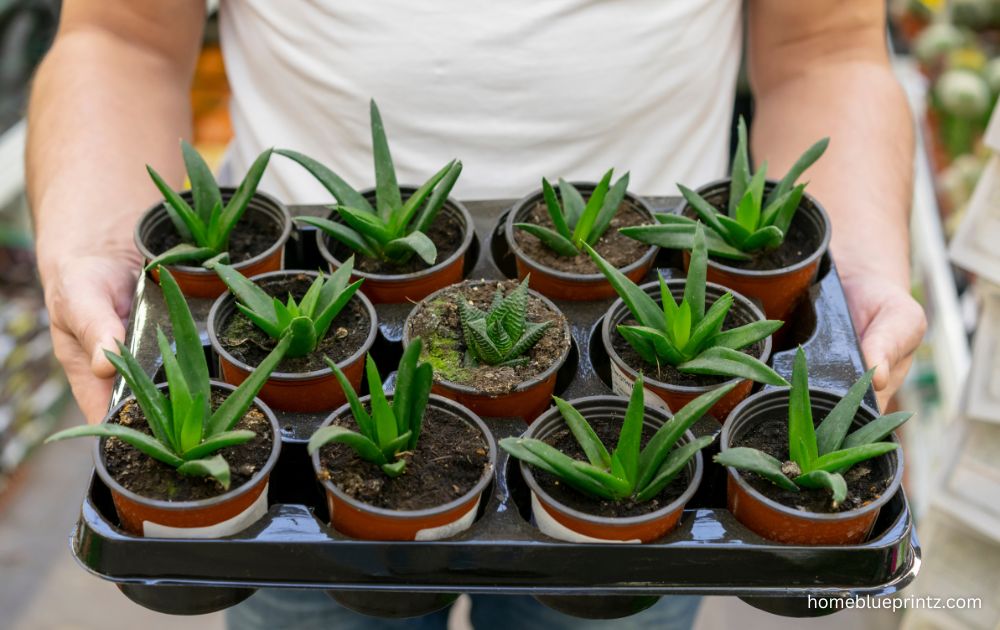The Ultimate Guide to Plant Trays: Grow Healthier Plants with Ease
If you’ve ever watered your plants and ended up with puddles on your floor or messy soil on your windowsill, plant trays are about to become your new best friend. These simple yet powerful gardening tools not only help keep things tidy but also promote healthier plant growth. Whether you’re a seasoned gardener or just starting your green journey, understanding how to use plant trays effectively can make all the difference.
What Are Plant Trays?
Plant trays are shallow containers placed under plant pots to catch excess water and soil, helping to keep your growing area clean and organized. They’re usually made from materials like plastic, metal, or ceramic and come in various sizes to fit different pots. Beyond just keeping things tidy, plant trays also promote proper drainage and prevent root rot by ensuring that excess water doesn’t sit inside the pot. In short, they’re simple yet essential tools for any gardener who wants healthy, mess-free plants.
Why Plant Trays Are Essential for Gardening
Plant trays are an essential part of any gardener’s toolkit because they help maintain cleanliness, control water drainage, and promote healthier plant growth. By catching excess water and soil, they prevent messy spills and protect surfaces from damage. More importantly, plant trays ensure proper moisture balance, reducing the risk of root rot and overwatering. Whether you garden indoors or outdoors, using plant trays keeps your space tidy and your plants thriving.
Different Types of Plant Trays
There are several types of plant trays available, each suited for different gardening needs and styles. From practical options to decorative designs, here are the most common types:
- Plastic Plant Trays: Lightweight, affordable, and perfect for everyday use.
- Metal Plant Trays: Durable, sturdy, and ideal for outdoor settings.
- Biodegradable Plant Trays: Eco-friendly options made from natural materials.
- Ceramic or Decorative Trays: Stylish choices that enhance your home décor.
Choosing the Right Plant Tray
Choosing the right plant tray depends on your plant’s needs, pot size, and the environment where it will be placed. The right tray not only supports plant health but also complements your décor and makes maintenance easier.
- Pick a tray that matches your pot size and shape.
- Choose materials suited to your setup (plastic, metal, ceramic, etc.).
- Ensure the tray allows proper drainage and easy cleaning.
How to Use Plant Trays Effectively
Using plant trays effectively starts with choosing the right size your tray should be slightly larger than the pot to catch excess water without flooding the roots. Always ensure your pots have drainage holes so that water can escape into the tray instead of accumulating in the soil. For indoor plants, empty standing water regularly to prevent root rot or mold growth. In outdoor settings, opt for sturdy trays that can withstand weather changes and keep your plants well-hydrated. Proper use of trays not only maintains cleanliness but also encourages healthier, stronger plant growth.
Benefits of Using Plant Trays
Using plant trays offers both practical and aesthetic benefits for gardeners. They help maintain cleaner spaces, promote healthy plant growth, and protect surfaces from damage.
- Improved water retention and drainage
- Easier maintenance and cleanup
- Protection for floors and furniture from moisture or soil stains
How to Maintain and Clean Your Plant Trays
Keeping your plant trays clean is essential for maintaining a healthy growing environment. Regularly wash them with mild soap and warm water to remove dirt, mineral deposits, and fertilizer residue. If you notice mold or algae buildup, soak the trays in a vinegar and water solution before scrubbing gently. Always let the trays dry completely before placing pots back on them to prevent moisture-related issues. A simple cleaning routine not only keeps your plants happy but also extends the life of your trays.
DIY Ideas for Creative Plant Trays
Creating your own DIY plant trays is a fun and budget-friendly way to personalize your garden space. You can repurpose everyday household items like baking sheets, wooden boxes, or even old lids to craft unique trays that suit your style. Adding a touch of creativity such as painting, labeling, or using eco-friendly materials like bamboo can transform simple trays into charming pieces of décor. Not only does this add personality to your garden, but it also helps reduce waste and promotes sustainable gardening practices.
Plant Trays for Hydroponics and Indoor Farming
Plant trays are essential in hydroponics and indoor farming, helping regulate water flow, support plants, and maintain a clean setup for optimal growth.
- Ensure even water and nutrient distribution
- Keep the growing area organized and tidy
- Support healthy root development without soil
Best Practices for Using Plant Trays in Small Spaces
When gardening in small spaces, every inch counts so plant trays can be a real game-changer. Choose compact or stackable trays that allow you to organize multiple pots vertically without cluttering your space. Opt for lightweight materials like plastic or bamboo for easy movement and cleaning. Using trays with built-in drainage or absorbent mats helps manage water efficiently while keeping your shelves or window sills spotless.
Common Mistakes to Avoid with Plant Trays
When using plant trays, small oversights can lead to bigger plant health issues. Avoiding common mistakes ensures your plants thrive without water damage or pest problems.
- Letting water sit too long in the tray, causing root rot.
- Using trays without proper drainage holes.
- Choosing trays that are too small for the pot size.
- Forgetting to clean trays regularly, leading to mold buildup.
- Placing trays directly on wooden surfaces without protection.
Where to Buy Quality Plant Trays
Finding quality plant trays is easier than ever, with plenty of options both online and in stores. You can explore local garden centers or home improvement stores for durable and eco-friendly choices. Online retailers like Amazon, Etsy, and specialty gardening websites often offer a wider variety in materials, sizes, and designs. Look for trays made from sturdy plastic, ceramic, or metal that suit your plant type and décor. Always check reviews and product details to ensure you’re getting long-lasting value.
Sustainable and Eco-Friendly Options
Sustainable and eco-friendly options are becoming increasingly popular among homeowners who value both design and environmental responsibility. Choosing materials that are renewable, recyclable, and non-toxic helps create a healthier living space while reducing environmental impact.
- Opt for recycled or reclaimed materials.
- Use energy-efficient appliances and lighting.
- Choose low-VOC paints and finishes.
- Incorporate sustainable wood or bamboo products.
- Support local and eco-conscious manufacturers.
Conclusion
Plant trays might seem like a small detail, but they’re game-changers for both indoor and outdoor gardening. They protect your surfaces, promote plant health, and make maintenance a breeze. Whether you prefer a minimalist plastic tray or an artistic ceramic one, the key is choosing what best fits your plants and space. With the right plant tray, you’ll grow healthier plants and enjoy a cleaner, greener home.
Read more interesting topic: Garden Shed Colours.
FAQs
- How often should I clean my plant trays?
Every two to three weeks is ideal to prevent buildup of dirt, mold, or mineral deposits. - Can I reuse old plant trays?
Absolutely! Just make sure to clean them thoroughly before reuse to avoid transferring pests or diseases. - What material is best for indoor plant trays?
Plastic or ceramic trays work best indoors—they’re easy to clean and match most home aesthetics. - How do I stop mold from growing in trays?
Keep trays dry between waterings and occasionally disinfect with a vinegar-water mix. - Are plant trays necessary for all plants?
While not mandatory, they’re highly recommended for potted plants to manage water drainage and keep your space tidy.
Share this content:














Post Comment